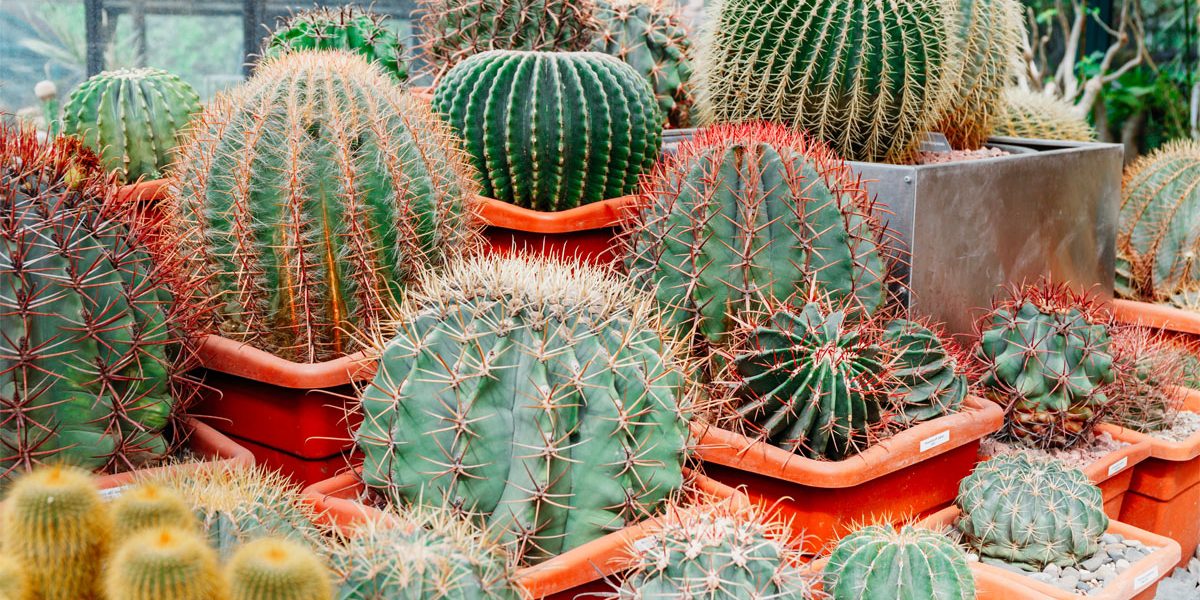Most people who buy and tend cacti love them. When they get sick it’s upsetting as they’ve likely been around for years. Use these steps to help save a dying cactus at your home or business. Read on to learn more.
Cut Rotting Parts Away
Rotting is generally a sign of overwatering. The black or brown sections of the cactus must be cut away. Then you must decide if your soil is completely soaked and should be put in a new pot with new soil, or if you’ll be able to let it dry out and begin your new watering schedule again. If you decide to repot your cactus you should use mix one part peat, two parts garden soil, and two parts coarse sand.
Adjust Daily Sunlight
Depending on the sunlight available your cactus may be getting too much or not enough sunlight. For cactus which are becoming more narrow or rounded more sunlight should be added. Either place the plant where it gets more hours of sunlight a day or choose to move it in the midday for best results.
Adjust Watering
For cacti that look wilted, are shrinking, or are wrinkled you should add water. It’s important to allow the soil to completely dry before watering, to avoid root rot. If your cactus is in a pot it should be one where excess water will drain easily.
Watering should be adjusted based on the temperature and season. During the hotter parts of the year you’ll want to water about 1 time per week indoors. During the cooler months of the year you’ll want to back that off and only water when the soil is dried out completely. For outdoors you’ll need to monitor the soil and water when it’s bone dry and there’s no rain in the forecast.
Rinse Off Dirt & Dust
When the flesh of the cactus is covered with dirt or dust it cannot process the light properly. You can use a soft sponge or rag to rinse off this residue. You can wipe it down with a sponge soaked in water and a drop of dish soap or you may choose to rinse off your cactus under the faucet in the sink. For outdoors you can use a house to gently rinse off your cactus.
Control Pests & Insects
Another cactus killer is pests and insects. They’ll cause yellowing sections on your cactus and make it sick. To common insects that are harmful to cacti are the spider mites and mealybugs. You can purchase solutions from your local nursery for spider mites and use rubbing alcohol to kill mealybugs. Spider mites are tiny red spiders that have webs that are like sheets. Mealybugs appear in powdery white clusters.
Use Low Nitrogen Fertilizer
Use some fertilizer at the beginning of the growing season which usually starts around March. Fertilizer is mixed and packaged in different ratios. The ratio that is best for cacti is one where the nitrogen is rated at 10. This means a common solution is a 10 (N) – 30 (P) – 20 (K). Avoid excessive nitrogen as it will cause stunted growth and a texture that’s flabby.
How To Treat Cactus Rot
Cactus rot is caused by overwatering. While owners might feel like frequent tending is how you care for plants, the cactus doesn’t need as much attention. Most cactus that turn brown and black to eventually die have been overwatered by accident by their owners.
Let Them Get Dry
While most plants get sickly if they aren’t watered often the cactus is a plant that needs to dry out as part of it’s plant cycle. The roots of the cactus are accustomed to having very little water in nature and will rot if you water them as much as you do your tomatoes.
Watch For Mushy Sections & Discoloration
It’s incredibly important to watch for your cactus to get mushy or start turning brown and or black. These are signs that overwatering has occurred. The roots are probably already dead and rotting. Simply do not ever overwater. Pay attention to your cactus soil and only water when it’s completely dried out. It may seem neglectful, but that’s the natural environment the cactus is used to.
What To Do If You’ve Found Cactus Rot
It is time to trim them off with a sharp knife and repot or replant your cactus. Make sure you use a good mixture of garden soil (2 parts), coarse sand (2 parts) and peat soil (1 part). It’s also important to choose a pot that’s a little oversized and has good drainage holes. If you’re growing cactus outside make sure the soil you’re planting in is good draining soil with a portion of sand to help facilitate this affect.
A&P Nursery Sells Cacti & Succulents in Arizona
A&P Nursery is excited to help you transform your outdoors with cactus & succulents in Mesa, Gilbert, Queen Creek, Tempe, and the rest of the East Phoenix Valley. Contact us, today!







